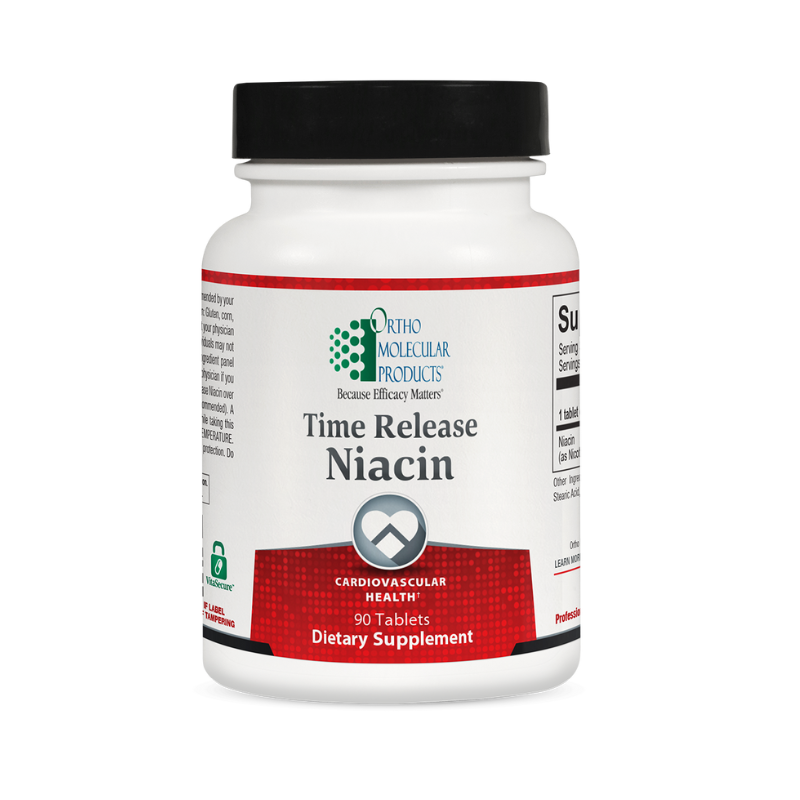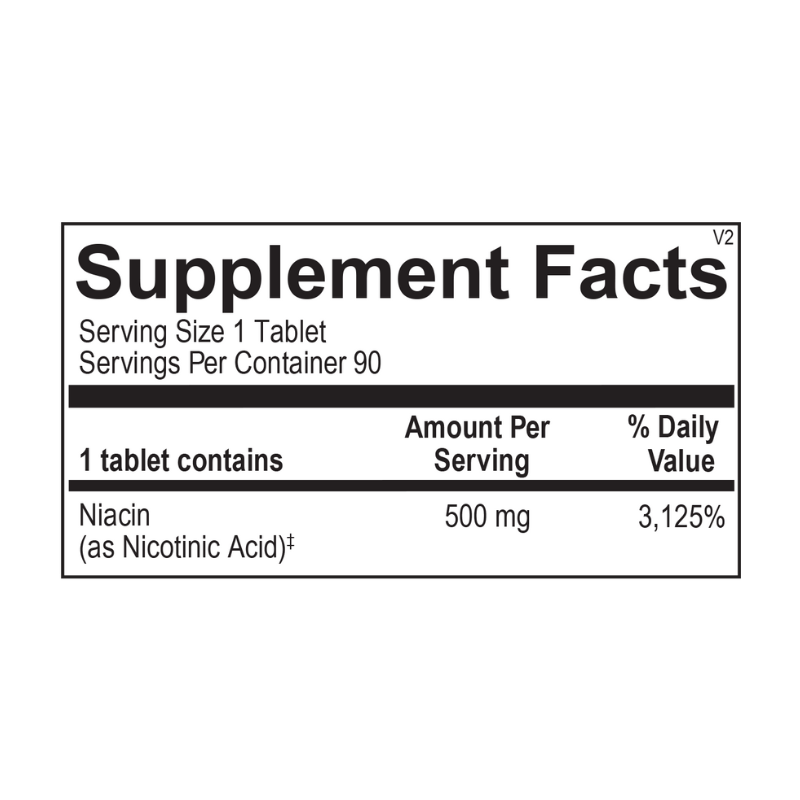CFO Health
Time Release Niacin
Time Release Niacin
Couldn't load pickup availability
Clinical Applications
- Promotes Healthy Blood Lipid Levels
- Supports Healthy High-Density Lipoprotein (HDL) Levels
- Maintains Healthy Low-Density Lipoprotein (LDL) Levels and Lipid Particle Size
- Maintains Healthy Triglyceride Levels
- Enhances Endothelial Function by Increasing Nitric Oxide Synthase
Niacin, also known as vitamin B3, is a micronutrient with a 40-year history of efficacy in supporting healthy lipid levels, especially high-density lipoprotein cholesterol (HDL-C) levels. However, one side effect often makes supplementing niacin a less than pleasurable experience, limiting adherence. Some patients experience flushing when supplementing niacin. However, a properly manufactured, sustained-release niacin circumvents this side effect. By using a proprietary, natural wax-matrix coating technology, Time Release Niacin is released slowly over a six- to eight-hour period to reduce flushing.
Suggested Use:
1 tablet three times per day with a meal or as recommended by your health care professional.
Benefits:
Niacin Depletion
Symptoms of mild deficiency of niacin may include indigestion, fatigue, canker sores and depression. Niacin deficiency, if left unattended, can negatively affect brain function leading to apathy, fatigue, disorientation and memory loss.
Cardiovascular Health and Cholesterol Balance
Niacin has been used since the 1950s to maintain healthy balance of cholesterol levels. Since 1978, researchers have labeled niacin a “front-line” nutrient for cardiovascular support. The National Cholesterol Education Program (NCEP) panel designated niacin a “first-line therapy” for support of specific parameters related to balancing cholesterol levels in 1988, further emphasizing the micronutrient’s safety and importance in cardiovascular health. Other studies have shown niacin to enhance long-term cardiovascular health.
These statements have not been evaluated by the Food and Drug Administration. These products are not intended to diagnose, treat, cure or prevent any disease.




